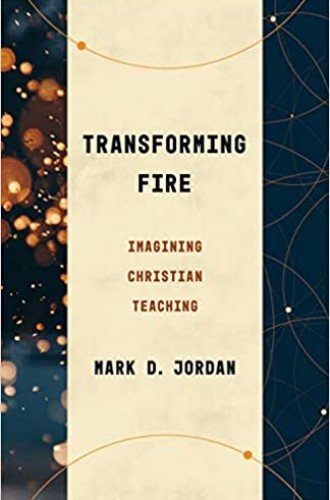Imagine how Christian teaching could transform our lives
Mark Jordan’s gentle, urgent invitation
“Our theology is written and taught under sin,” writes Mark Jordan. “It is, after all, our theology.” These words appear within an appeal for readers to be generous in assessing the two “Christian texts about teaching through bodies” that Jordan has just presented, Gregory of Nyssa’s Life of Macrina and Marcella Althaus-Reid’s Indecent Theology. “To imagine that we could purify ourselves by purging others” with whom we disagree, writes Jordan, “is a worse mistake” than spending too much time with their words in the hope that we might learn something from them.
Playful juxtapositions like this one—and the hermeneutical openness they commend—are the heart of Transforming Fire. They animate the book, giving life to what it invites: come, let us imagine together how Christian teaching can transform the lives, the hearts, and the practices of those who encounter it. It’s a gentle invitation, but it’s also urgent. “Even as institutions of theological education shrink or vanish,” Jordan writes early in the book, “some of the available patterns of Christian teaching might still work wonders.”
Jordan finds these patterns in texts that have long been used in theological classrooms, some for decades and others for centuries. He examines C. S. Lewis’s The Lion, the Witch, and the Wardrobe alongside Octavia Butler’s Parable of the Sower as a way of thinking about power relations within various stages of Christian formation. He juxtaposes Bonaventure’s The Mind’s Path into God with Paul Tillich’s The Courage to Be to consider what happens when the boundaries of knowledge change. He creates a conversation between Teresa of Ávila and John Bunyan and another between Søren Kierkegaard and Simone Weil. Each of these pairings illuminates a facet of what it means to find oneself caught up in theology, shaped by it and shaping it.






